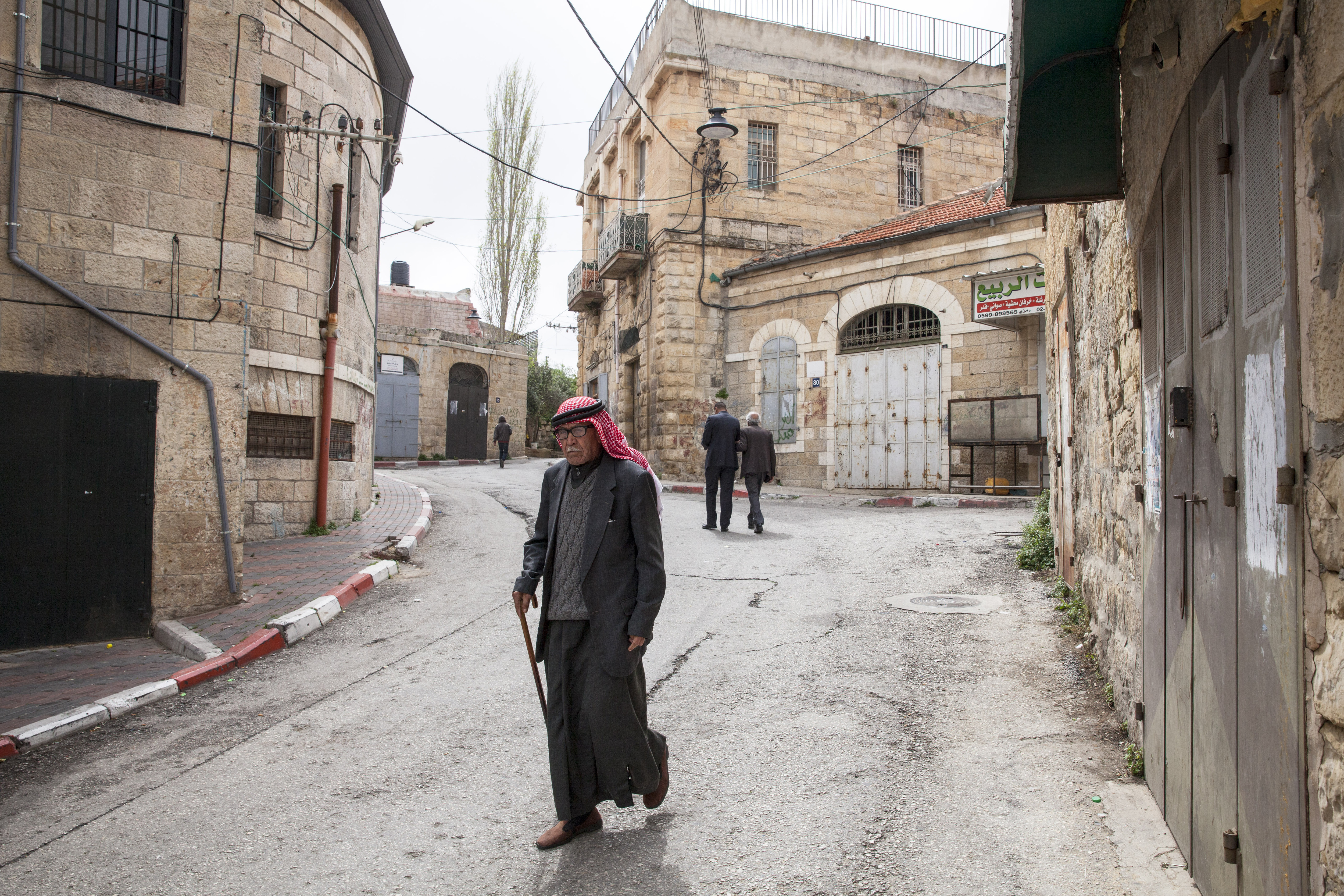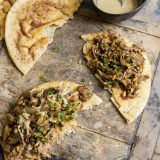It was at Paspartu, one of dozens of bars and cafés that spill onto the streets of Tel Aviv’s Jaffa neighborhood. Sofas and tables sprawled into warmly lit alleys while late nighters lingered over drinks, a backdrop of vaguely techno music and the aromas of fried chickpeas and spices.
In front of me at the bar, an unpretentious tangle of loosely shredded chicken mixed with lightly browned onions and studded with pine nuts, all of it flecked red and stuffed into a tender pita bread and drizzled with tahini.
I’d ordered it blindly, the menu name—musakhan—meaning nothing to me.
It was rich and savory, but not overwhelming, lightened by a sunny citrus flavor I struggled to identify. It tasted of a push-and-pull between familiar and exotic, a combination that made it almost impossible to stop eating.
It was some of the best bar food I’d ever eaten. Some of the best chicken I’d ever eaten. And it paired fabulously with a beer. I needed to know more.

The barman gave me my first clues, explaining that musakhan is a Palestinian dish traditionally served during the olive harvest. And that elusive something, that taste and those red flecks I couldn’t quite suss out? Sumac.
And so the next day, I traveled an hour south into Palestine, a border crossing that leaves behind the urban hipness of Tel Aviv and the ancient awe of Jerusalem, welcoming you instead with walls, graffiti and burning trash. There is no doubt you have come someplace other, a place where expectations and emotions have hardened edges.
I visited Nadir, a 34-year-old Palestinian guy Friday for the owner of an antiques shop in downtown Ramallah. In a small, modern kitchen on the second floor of the shop—a stone building crowded with tapestries, pendants and artwork—he agreed to teach me a classic masukhan, a process that would take several hours.
Nadir is unique; Palestinian men rarely cook. But each day he gets up early to prepare the day’s food for his family. He shrugged it off. He’s the first man in his family to cook, but he enjoys it.
His musakhan began with several chickens, quartered and simmered in a garlicky broth spiked with sumac. A shocking amount of sumac, measured practically by the fistful. It’s hard to imagine any spice being used so aggressively in European or American cooking.
Turns out, sumac appears throughout Middle Eastern cooking, but particularly in Palestinian. And often copiously. It's made from the deeply red berries of the sumac bush, and I was right about it lightening the otherwise heavy musakhan I'd eaten the night before. It's sweetly-tart flavor works like lemon juice to cut through and balance bold flavors. In fact, until the Romans introduced lemons it was the source of most tartness in European cooking.
While the chicken poached, in another pan Nadir sautéed onions until sweet and tender in ample olive oil, seasoning them with cardamom, turmeric, black pepper and—of course—more sumac. The latter by the tablespoonful. I lost count after a while.
Once the chicken quarters had poached for 40 minutes, they were added to the onions and the whole thing went into the oven to roast just until the skin crisped, close to an hour. Meanwhile, Nadir prepared the sides that would accompany the chicken—most importantly fresh, fat taboon flatbread that was brushed with oil and sprinkled with sumac before being warmed.
There was also fattoush, usually a salad of fresh vegetables and fried torn hunks of pita bread—seasoned, of course, with more sumac. Nadir’s version skipped the bread—already represented with the chicken—and tossed chopped cucumbers, tomatoes, parsley and fresh chilies with sumac and tahini. The result was fresh and lemony, but also pleasantly savory and rich.
When the chicken was ready, Nadir set a taboon on each plate, then spooned onions over it. Chicken—a whole quarter—tops it all. Nadir’s boss, her son and his girlfriend joined us for the meal, all of us seated around a short table surrounded by hanging rugs and tapestries. To eat, hunks of taboon were ripped from underneath and used to tear away chunks of meat, a process impossible without red-tinged oil dripping down our hands. It was overwhelmingly satisfying.
We loved the flavor from Nadir’s robust use of sumac, but we preferred the ease and speed of the version I ate at Paspartu. That meant chicken quarters and multi-pot, multi-step cooking were out; boneless, skinless thighs were in. Since there was no skin to crisp, we were also able to skip the oven-browning step.
Rather than cook the onions and chicken in separate pots, we simply browned the chicken in a large Dutch oven, then set it aside while the onions cooked. We then added chopped pine nuts (for rich body), our seasonings—substituting sweet paprika for Nadir’s cardamom, because it played so well against the lemony sumac—and liquid and returned the chicken to the pot to gently poach.
Once the chicken was cooked, it was easy to pull it from the pot and shred it with forks while the liquid and onions simmered down into a thick, flavorful sauce. When returned to the pot, the shreds easily sopped up the sauce.
To serve, we borrowed ideas from Paspartu and Nadir, brushing pita bread with oil and sumac—an opportunity to add another layer of flavor—then piling the chicken on top. A sprinkle of pine nuts and a drizzle of tahini tied it all together.




